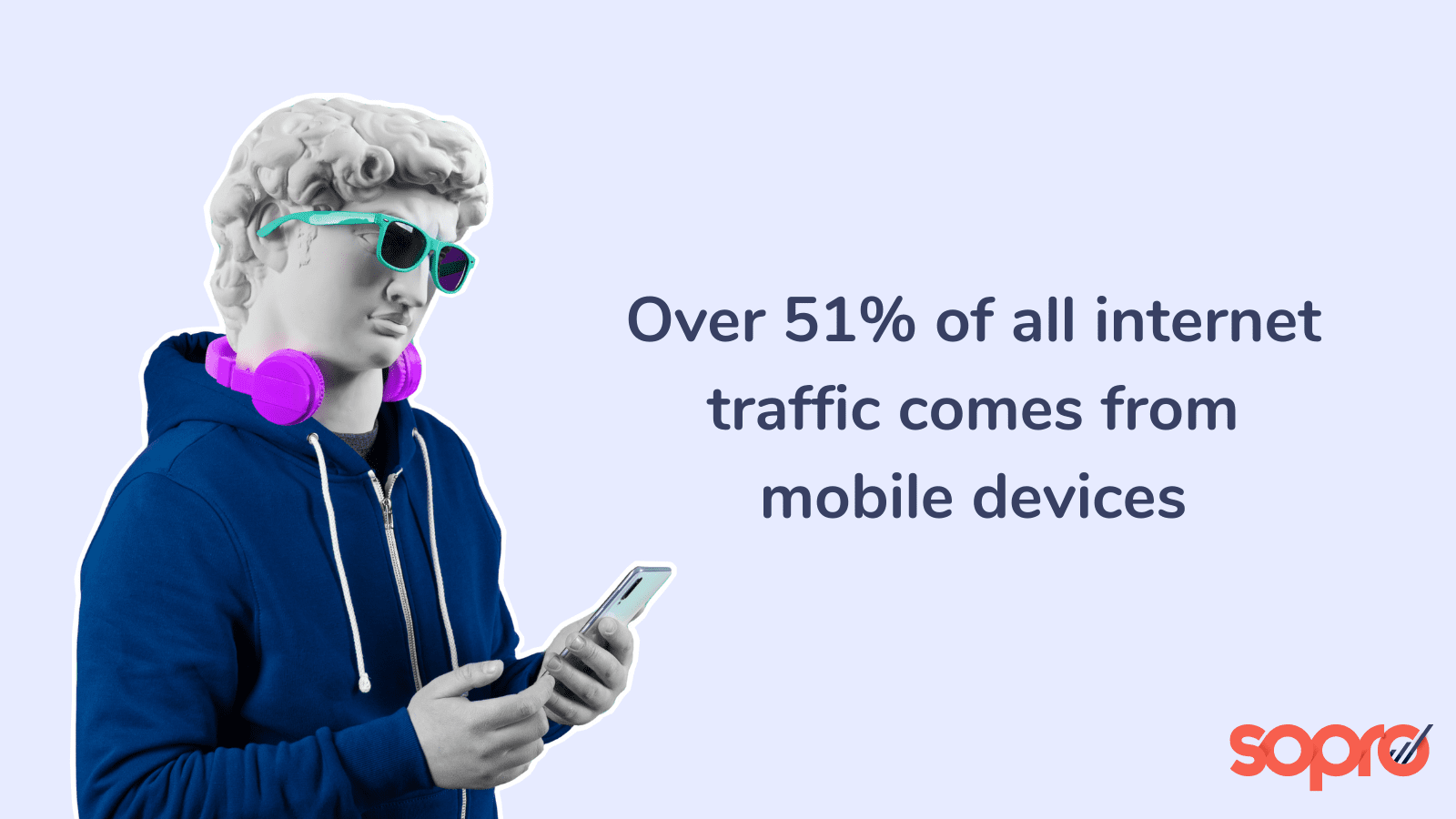How to optimise your website for lead generation campaigns

What improvements you can make to your website to ensure prospects are impressed? Here’s how to optimise your website for lead generation campaigns.
What is web optimisation?
Web optimisation is the process of making tweaks and improvements so that your website performs at its best.
When optimising a website, businesses usually look at:
- How easily the website can be found on search engines (SEO)
- Whether the page content is working (copywriting)
- How well the tech on the back-end is working (web development)
- The overall user experience (UX design)
Your website is your digital shop window, and the only member of your sales team that works 24/7. So making it the best it can be… just makes sense.
Why is web optimisation important for lead generation?
Web optimisation is crucial to the success of your lead generation campaigns. When people receive a message from you and decide to visit your website, they’ll judge the credibility of your business based on the appearance and functionality of your site.
An optimised website with a polished design, relevant content, and secure features creates a trustworthy image, making prospects more likely to engage with your brand. Engagement also improves the effectiveness of your marketing campaigns by driving more conversions from the traffic you generate. Winner!
11 ways to make your website better
An optimised website builds trust, creates a connection, and makes it easier to sell. So how do you get started with optimising your website? Here’s 11 ways to make your website better:
1. Make it faster
One in four of us will abandon a website if it takes more than four seconds to load. Don’t risk losing potential business because of a sluggish site!
If your website’s feeling more stangant than swift, there are some quick fixes. From the simple tweaks like making your images smaller, to the more technical aspects you might need help with (such as browser caching and shrinking CSS/JavaScript files). Check out Google PageSpeed Insights for a deeper look at the speed of your web pages.
2. Make it technically sound
Keep your website optimised and up to date by regularly fixing broken links, removing outdated content, and checking for any technical issues. Regular maintenance ensures your website remains in optimal condition.
3. Make it mobile-friendly
Over 51% of all internet traffic comes from mobile devices, so your website needs to look good on phones and tablets – not just desktops.
Your prospects might be on the go when they decide to check you out, so ensuring your website adapts to different screen sizes will ensure a seamless experience, no matter what device they’re using.

4. Make it secure
One way to turn off potential customers is to send them to a website that isn’t safe, especially if your lead generation activity includes any form of cold outreach.
Make sure your website is secured with an SSL certificate (a digital authentication that encrypts data transmitted between the user’s browser and your server). This enhances security, builds trust with visitors, and positively impacts your search engine rankings.
5. Make it easy to navigate
Getting a lead onto your website is the first big hurdle, the next is getting them to stay on and browse. Most users go on their own journey around your website, so they should be able to find what they want quickly and easily.
Does your navigation menu feel intuitive? Do you have a search function to help visitors find specific content?
Also, make sure to signpost the stuff YOU want them to see. Are your most important pages clearly linked? Try using descriptive labels for menu items and making your call to action (CTA) as obvious as possible.
6. Make it easy to read
Your website should be easy on the eyes. Break up content into shorter sections with subheadings for easy scanning. And dont get bogged down in jargon; use words and phrases that resonate with your target audience.
7. Make it convert
Are people visiting your website, but not taking action? You’ll need to find out why, and then fix it. This is known as conversion-rate optimisation (CRO).
CRO helps you figure out what’s stopping visitors from taking action, like booking a demo or signing up for your mailing list. By analysing how people use your website, you can then make small changes that have a big impact on your sales. Hubspot has a great guide on how to get started with CRO.
8. Make taking action simple
You want users to convert, so you’LL need to make your CTA stand out on the page. Clearly tell prospects what you want them to do, and highlight the benefits of doing so.
Any buttons and links on your CTAs should make it clear to the user what’s going to happen next. For example, “discover more” or “click here” are too generic (not to mention bad for accessibility), while “download now” lets people know what to expect.
If you want leads to fill in a form, make it as quick and simple to do as possible. Simplify it so you’re only capturing essential information. Fewer fields, less friction, more conversions.
9. Make it valuable
Content, it’s kind of a big deal. If you’re not offering something on your website other than a sales pitch, you’re missing a trick. Publishing content helps with SEO, but it also adds an extra layer of value for your prospects and positions your brand as the expert in your field.
Tap into your team’s knowledge and create content such as blogs, ebooks, whitepapers, and webinars. Customers (and search engines) will thank you for it.
10. Make it a showcase
Got happy customers? Show them on your website. 95% of customers read online reviews before buying a product, so make it easy for them to find your rave write-ups from Trustpilot, Google etc.
Include testimonials, success stories, or security badges to show prospects that others trust you. When you show real-life examples of how your services have benefited others (known as “social proof”), it serves as reassurance and boosts conversions.
11. Make it personal
The personal touch… there’s a reason we love it. If you’re creating landing pages specifically for your outreach campaigns, you can go one step further and use clever tech to personalise them for each visitor.
Web plugins can add features such as displaying a prospect’s name and offering content curated to their interests. These little touches are easy to implement, and add an extra flair that’ll set you apart from the competition.
Tools such as IP tracking can also help with nurturing your leads. For example, if you can see that a prospect’s been browsing your website but hasn’t replied to your initial message, that’s an opportunity to get in touch and ask if they’d like any more information. These little tricks all help to improve your website and boost your lead generation results.
Sopro and a strong website: a winning team
As we’ve seen, you need to step up your website game in order to stand out and keep potential customers interested.
With prospects now carrying out their own online research before even thinking about hopping on a call, the sales process naturally takes longer, and you have more competition to deal with.
Luckily, with Sopro, finding and connecting with leads is a piece of cake. Our fully managed lead generation services use smart technology and up-to-the-minute data to reach out to the right people with the right message. So you can sit back and watch those high-quality leads roll in.
More touchpoints, more engagement, more time to sell. See how it works.
.
If you’re looking for more guidance, take a look at our blog. Our experts have compiled guides on everything you need to know about lead generation on prospecting, including information on how to overcome sales objections, how to generate more leads from webinars, and using referral marketing to generate better leads.
You can also read our ultimate guide to B2B lead generation so you know how to smash it for your business








Share